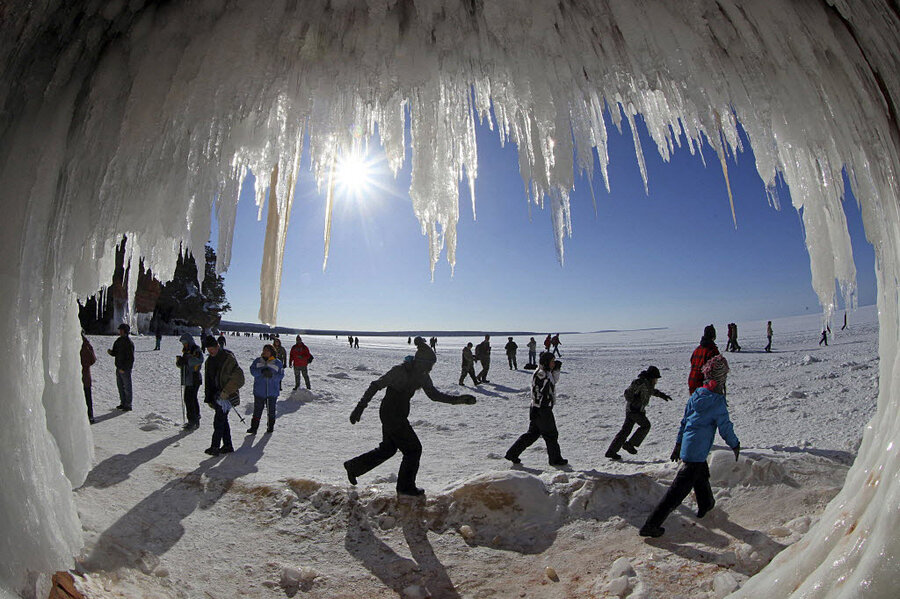Washington ice cave collapse: The risks of frozen spelunking
Loading...
One hiker was killed and four were injured in an ice cave collapse near Verlot, Washington, on Monday, officials said.
All victims were believed to be accounted for, Snohomish County sheriff spokeswoman Shari Ireton said Monday night, but the person who died still remains buried under debris in the caves. Authorities suspended the recovery effort at nightfall.
Three of the injured, in critical to satisfactory condition, were airlifted to a Seattle trauma center, and the fourth – a juvenile girl with only minor injuries – was sent to a hospital in Everett, Washington, Ms. Ireton and a spokeswoman for the Seattle hospital Susan Gregg said.
At the time of the collapse, a US Forest Service warning had been in effect since May. The Big Four Ice Caves had been said to be in their “most dangerous” state because of unusually high temperatures.
In the past year, several warning signs have been posted to alert hikers to the danger, Tracy O'Toole, a Mount Baker-Snoqualmie National Forest spokeswoman, told the Daily Herald of Everett.
According to the Washington Trail Association, there is always a certain level of danger in ice caves, even when no official warning has been issued.
“Regardless of weather, temperature, or snow pack, ice caves in Washington pose a very real threat to anyone venturing in or near them,” the WTA’s website warns. “It is never safe to enter an ice cave, but the caves at Big Four pose a particular danger if you venture beyond the viewing platform at the end of the trail.”
Still, the Big Four Ice Caves remain a popular destination for hikers. Several others were present during Monday’s collapse, including 18-year-old Chloe Jakubowski, who told the Seattle Times she drove with three friends about 15 miles to a pay phone to call emergency services.
"Everybody there, we grabbed everybody out and helped as best we could," she said.
Another Big Four collapse occurred the day before, which a hiker caught on film. Several tourists had been inside the cave when it collapsed, but no injuries were reported.
This report contains material from the Associated Press.








